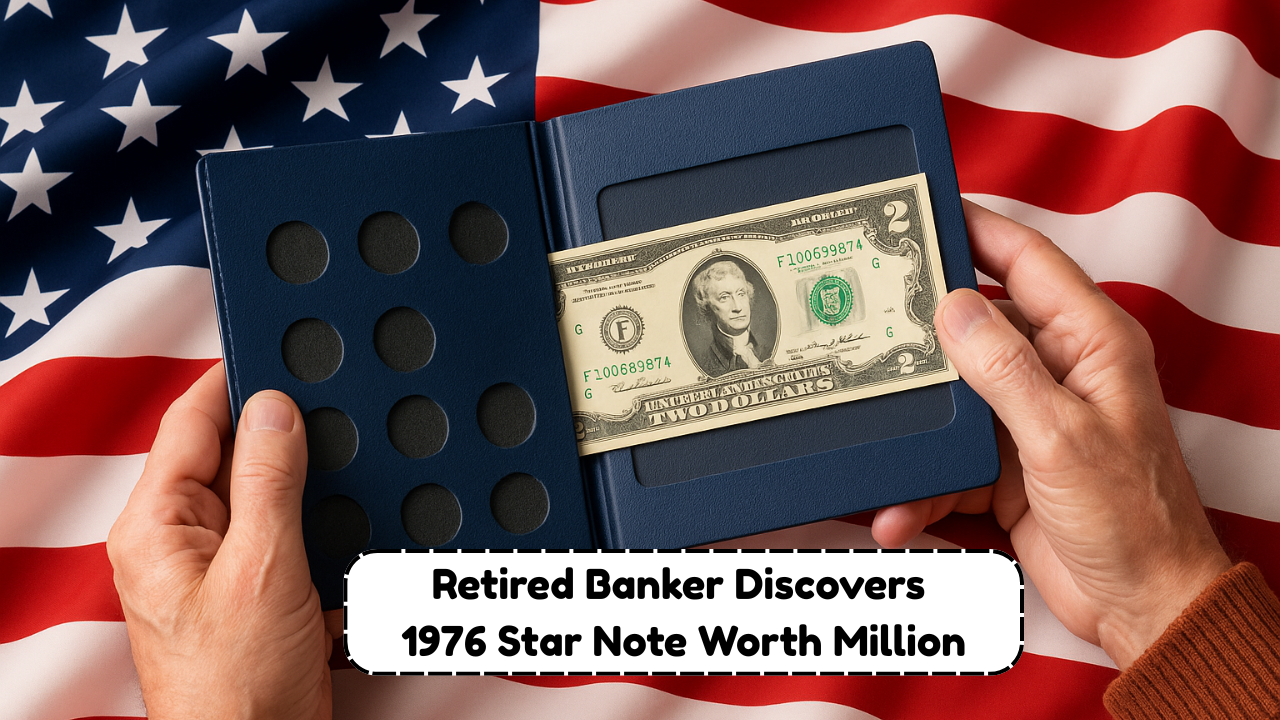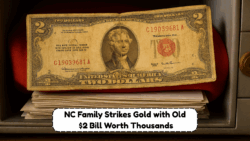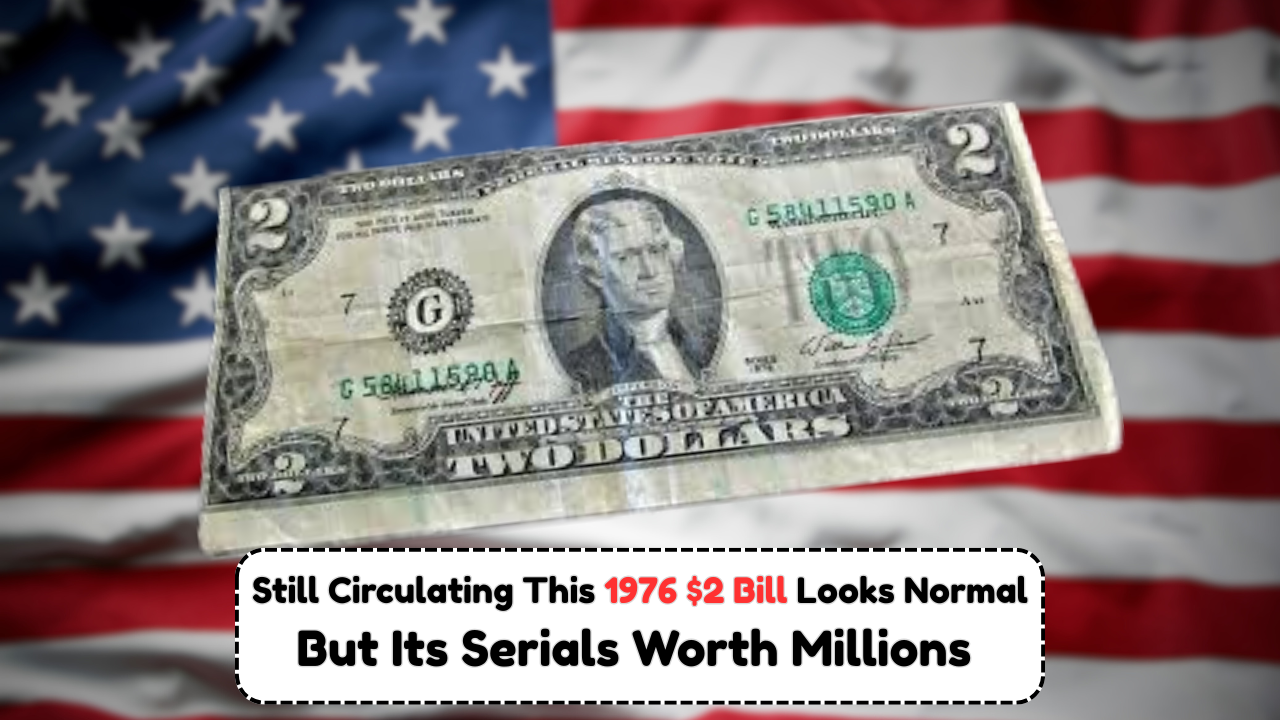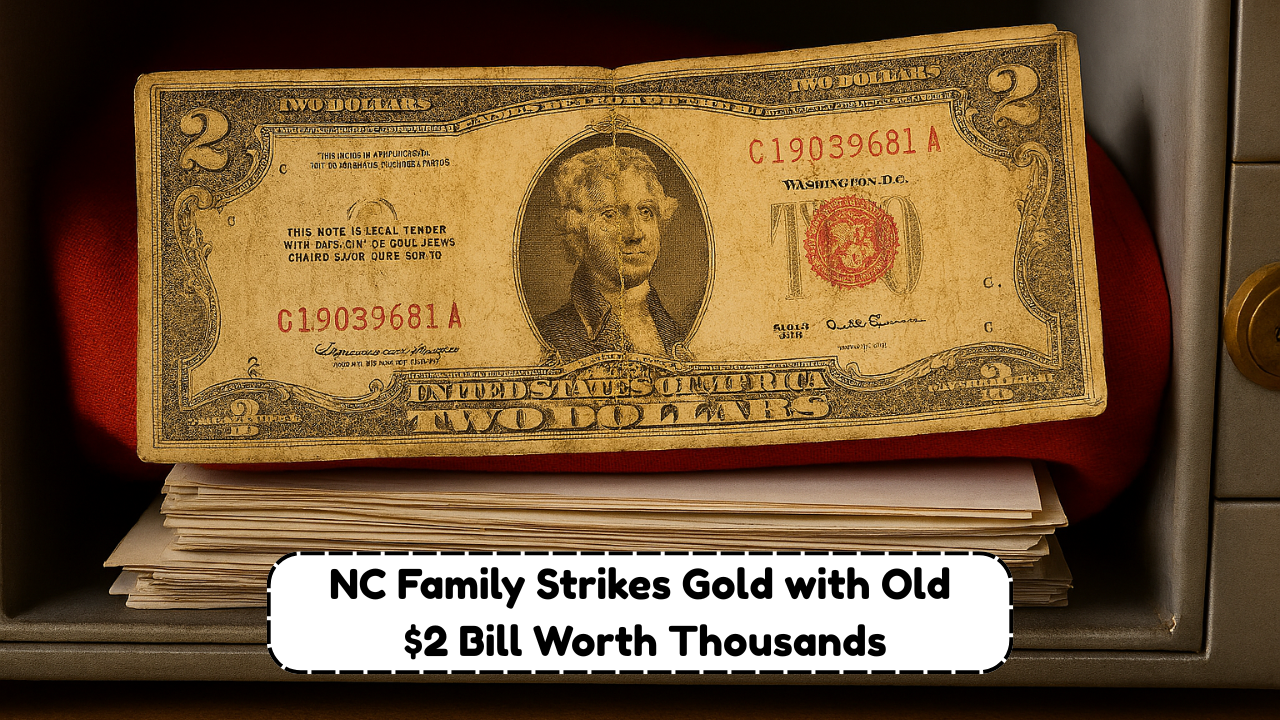In a quiet suburb of Ohio, a retired banker recently uncovered a 1976 star note tucked away in an old coin folder — a discovery that stunned even experienced collectors. What appeared to be just another old $2 bill turned out to be a rare and potentially valuable piece of American currency. These “star notes” are not widely understood, yet they hold significant value among numismatists and history enthusiasts alike.
If you’re curious about how to identify, evaluate, and even collect these rare bills, this article provides everything you need to know — from spotting the star symbol to understanding the rarity of the 1976 series.
What Is a Star Note and Why Is It Special?
A star note is a replacement banknote issued by the U.S. Bureau of Engraving and Printing. When a printing error occurs during the production of regular currency, the faulty notes are destroyed and replaced with a new bill — one that features a star symbol in its serial number.
Why Star Notes Are Unique and Valuable
- Printed in smaller batches than standard notes.
- Marked with a star symbol instead of a letter at the end of the serial number.
- Collected for their scarcity and printing history.
- Some star notes are worth well over face value.
These star notes are essentially printing corrections — and for collectors, they’re golden.
Spotlight on the 1976 Star Note
The 1976 series marked America’s Bicentennial celebration — a time of historical pride and national interest in collectibles. While the $2 bill was reintroduced that year with a special reverse design, few people knew that replacement versions (star notes) of these bills were being printed in limited quantities.
Key Characteristics of the 1976 Star Note
| Feature | Description |
|---|---|
| Denomination | $2 Bill |
| Series Year | 1976 |
| Identifier | Star (*) at the end of the serial number |
| Print Facilities | Fort Worth, TX and Washington, D.C. |
| Ink Color | Green with red treasury seal |
| Historical Design | Thomas Jefferson front, Declaration back |
| Paper Composition | Cotton-linen blend with red/blue fibers |
| Collector Popularity | High, due to historical and print rarity |
These notes are not just currency — they are pieces of American heritage, often hidden in plain sight.
How the Ohio Banker Found It – And Why That Matters
The retired banker reportedly found the 1976 star note while cleaning out a family coin folder that hadn’t been touched in decades. Upon noticing the unusual star at the end of the serial number, he reached out to a local coin dealer who confirmed its rarity and value.
Why This Story Matters
- Reminds collectors to recheck old collections and folders.
- Highlights that rare notes may be hiding in everyday places.
- Sparks renewed interest in star notes, especially from 1976.
You never know what’s tucked away in your attic — even a common-looking bill could be worth hundreds.
How to Identify a 1976 Star Note (Step-by-Step Guide)
Spotting a 1976 star note is easier than you might think if you know what details to look for.
H3: Simple Ways to Identify One
- Check the serial number: a true star note ends in a star symbol (*) instead of a letter.
- Verify the series year: look for “Series 1976” on the front of the note.
- Examine the Federal Reserve Bank seal — certain districts had smaller print runs.
- Inspect for authenticity markers: high-quality paper, correct color tones, and proper alignment.
Federal Reserve Bank Codes (Printed on 1976 Star Notes)
| Federal Reserve Bank | Code | Known Star Note Quantity | Rarity Level |
|---|---|---|---|
| Atlanta | F | Moderate | Medium |
| New York | B | High | Low |
| Richmond | E | Low | High |
| San Francisco | L | Low | High |
| Chicago | G | Moderate | Medium |
| Dallas | K | Very Low | High |
| Philadelphia | C | High | Low |
| Kansas City | J | Low | High |
Collectors should especially look out for notes from Dallas, San Francisco, and Richmond due to their limited print numbers.
How Much Is a 1976 Star Note Worth?
Not all 1976 star notes are equal — their value depends on the issuing bank, print run, condition, and serial number.
Factors That Influence Value
- Condition: Uncirculated notes are worth significantly more than worn ones.
- Federal Reserve District: Notes from lower print districts fetch higher prices.
- Serial Number Patterns: Fancy numbers (e.g., 00000001*, 12345678*) can greatly increase value.
- Collector Demand: Prices fluctuate based on interest and availability.
Estimated Value Chart for 1976 Star Notes
| Condition | Common Districts | Rare Districts |
|---|---|---|
| Circulated | $3–$7 | $15–$30 |
| Very Fine | $8–$15 | $30–$50 |
| Extra Fine | $15–$25 | $50–$75 |
| Almost Uncirculated | $25–$45 | $75–$100 |
| Crisp Uncirculated | $50–$90+ | $100–$250+ |
These values are average estimates and can vary by buyer and platform.
Where to Find 1976 Star Notes Today
While you may not have a forgotten coin folder like the Ohio banker, there are still several ways to find these rare notes.
Common Places to Search
- Old family collections or drawers
- Estate sales and garage sales
- Coin shops or antique stores
- Bank note dealers and coin expos
- Online auctions (eBay, Heritage Auctions)
Collectors often recommend checking every old bill before spending it — you might just find a hidden gem.
How to Preserve and Store Star Notes
Preservation is key when it comes to maximizing the value of any rare currency.
Best Practices for Storage
- Use acid-free sleeves or holders designed for currency.
- Avoid folding or bending notes.
- Store in climate-controlled areas away from moisture and sunlight.
- Handle with clean hands or gloves to prevent oils or stains.
- Keep a detailed inventory for insurance and selling purposes.
Proper care ensures your star notes retain their value for years to come.
The story of the retired banker in Ohio teaches us an important lesson — sometimes history lies hidden in plain sight. That single star on a 1976 $2 bill turned an ordinary piece of currency into a collectible with value and story.
Whether you’re a casual collector or a passionate numismatist, knowing how to identify and appreciate star notes, especially from historic years like 1976, can bring both joy and potential profit.
Don’t overlook the little things — even a small star can lead to a big discovery.
Frequently Asked Questions (FAQs)
What is a 1976 star note?
It’s a replacement version of the 1976 $2 bill, printed with a star symbol at the end of the serial number, used to replace misprinted notes.
Are all 1976 star notes valuable?
Not all are highly valuable, but those from rare Federal Reserve Banks or in uncirculated condition can be worth a lot more than face value.
How can I check if my $2 bill is a star note?
Look at the end of the serial number — if it ends in a star (*) instead of a letter, it’s a star note.
Can I spend a 1976 star note?
Yes, they are legal tender, but spending one may not be wise if it holds collector value.
How do I know which star notes are rare?
You can check the Federal Reserve Bank it came from and consult collector catalogs or auction history for rarity details.
Where can I sell my 1976 star note?
Trusted options include eBay, coin dealers, numismatic shows, and online currency forums.
What increases the value of a star note?
Factors include condition, serial number patterns, rarity of issuing district, and collector demand.
Are modern star notes still being made?
Yes, the U.S. Treasury still issues star notes today when they need to replace damaged or misprinted bills.







